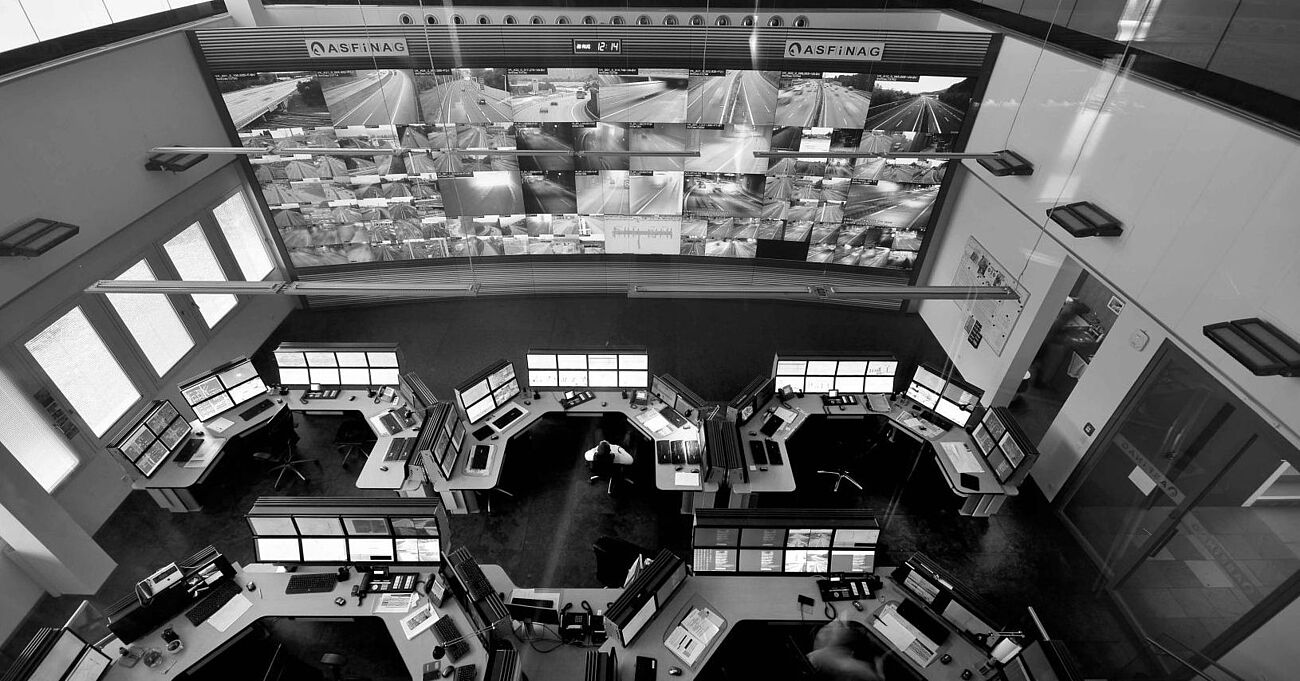VMIS 2.0
Center of the Traffic Management and Information System of the ASFINAG (VMIS) in Austria

The project for the construction of control center of the traffic management and information system version 2 (VMIS2) comprises the region wide traffic control (about 800km) and the operation of all tunnel facilities for Austria's trunk roads in the total network of 2,183 km.
The contract is being handled by the consortium EBP AG (Switzerland) - Heusch/Boesefeldt GmbH - evon GmbH (Austria).
Heusch/Boesefeldt was responsible here for the development of the software of the core system of the traffic control center and the regional traffic management centers and the connection of the TLS infrastructure. The realization of the control logic was done according to MARZ 2018. Apart from that Heusch/Boesefeldt developed the expert GUI for the management of the evolving versions for the master data and geodata.
In analogy to the previous system VMIS1, the new core system consists of several regional traffic management centers as well as a superordinate traffic computer center.
Key components of the overall system are the Operational GUI (OP-GUI) and the Traffic Engineer Workstation (VIA). The OP-GUI provides the operators in the control centers with route views and network views, among other things. The VIA offers traffic engineers a parameterization interface for evaluations and analyses.
Heusch/Boesefeldt realized the central functions of the system with management with master data, including configuration of all connected TLS infrastructure and integration of the digital map based on the Austrian Graph Integration Platform (GIP). This offers comfortable versioning and management functionalities, which can be operated via the so-called expert GUI. With this functionality it is possible for the traffic engineer to manage the different versions on the development, test, integration and productive environments.
The basic feature here is the integration of official referencing via route kilometers and route designators on all main lanes and ramps. For this, the system contains a central geo-service, which is responsible for the conversion between the different references, and a configuration service, which manages plant configurations and other master data.
Together with the configuration information provided by configuration service the OP-GUI uses the information of the geo-service for the automatic generation of route overviews and network overviews.
The geoservice and config service are also used by the traffic algorithms to query system configuration and route characteristics.
The system collects all available data and information from the connected facilities and recording systems and transmits them to the connected central data storage of ASFINAG.
The consortium provides service and maintenance around the clock (24/7/365) and guarantees availability of at least 99%.
Together with the configuration information provided by configuration service the OP-GUI uses the information of the geo-service for the automatic generation of route overviews and network overviews.
The system collects all available data and information from the connected facilities and recording systems and transmits them to the connected central data storage of ASFINAG.
All specifications of the system have been developed in compliance with the German regulations, in particular the MARZ (specification for the hardware and software equipment of computer centers) in the latest version 2018 as well as the TLS (technical specifications for outstations).
Since the opening of the traffic center and the first regional traffic management center in Vienna in Dec 2021, the consortium provides maintenance and service around the clock (24/7/365) with a guaranteed availability of at least > 99%. This high availability is achieved by a geo-redundant OKD cluster for the regional traffic management center (rVMZ) systems and the traffic computer center.

